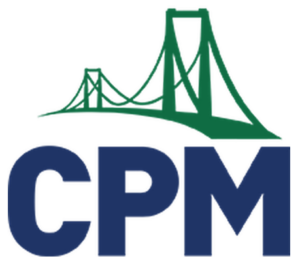October 2023
One of the many gifts that math teachers possess is the ability to quickly glance at a student’s solution and determine whether or not that student has an understanding of a concept. This is due to the teacher’s own passion for sensemaking and perseverance with solving problems. That is, teachers have already worked through mistakes and misconceptions in their desire to understand a concept and therefore are clever at anticipating how a student might think through a problem.
Students newly learning a concept will not yet have the same ability as a teacher. Teachers have the experience of thinking through multiple approaches. They have thought about whether one approach is superior to another for a particular application. Although the previous statement seems obvious, it is easy to ignore when we ask students to critique their peer’s understanding or, for that matter, to self-assess their own understanding. Students may not have acquired enough knowledge to effectively self-assess, which can create a situation where their perception of their understanding is inflated. However, self-assessment and peer-assessment remain highly effective learning tools. Why is this the case?
Promoting Flexible Thinking and Reflection
Self-assessment and peer-assessment promote flexible thinking and reflection, and I would argue that they should become a daily part of your teaching practice. To support engagement in these practices and to aid in a teacher’s own ability to determine whether a student understands a concept, consider developing student capacity to assess the following skills: determining whether a solution is complete and whether their argument establishes a clear thinking path.
Unlike checking for understanding, completion and justification are two things that students are able to evaluate. Completion may be something that students can evaluate immediately by asking the usual questions: “Which parts of the question have you answered?” “How can you indicate to another student where you have answered each part of the question on your paper?” Notice that I framed these questions more openly than the closed question, “Did you answer all of the questions?”
Coaching Students for More Robust Justifications
Students can support each other and themselves by focusing on completion and justification when they self-assess and peer-assess. Evaluating the quality of justification is a little more challenging than evaluating completion because it is often a skill that is concept- and student-dependent. That is, not all students classify justification as proof of learning equally. In addition, teachers often have an ideal justification that they really want, so that students have to decode what the teacher wants. This is especially true when teachers use the statement, “Show your work.” This ambiguous statement can be interpreted in many ways. The teacher probably wants the students to create a convincing argument that their solution is correct. Students see this as producing calculations and diagrams that popped into their thinking as they were writing the solution. The teacher in this case is using a “guess what I am thinking” strategy rather than being transparent with justification expectations. That is, the teacher has an idea of what they are looking for, but the students have to guess what those expectations are. A better method would be for the teacher to use a justification rubric and practice that rubric with the students. As an example of this difference in thinking, I will relate a story I encountered while I was coaching a teacher.
Sam was teaching an algebra course at a small rural school. We discussed his frustration with what students were writing in their notebooks while answering the core problems of the lesson. As he circulated, he would say, “Show your work,” or, “Can you provide a better explanation?” These questions were not creating the shift in justification that he desired. He and I decided to create a Justification Rubric (Figure 1). He provided each student with a copy of the rubric and then asked them to paste this rubric onto the inside cover of their notebook. As he circulated, he would say things such as, “That justification looks like it is developing. What would it look like if it was robust?” The students would explain the edits they would make to Sam and he would reply, “I’m going to take another circulation lap. When I return, could you make sure your justification is robust?” This conversation became a regular event in Sam’s room, and the results were staggering. Students’ notebooks became solution manuals with diagrams and notes rather than just answer keys. Sam’s effort not only shifted their reasoning during the core problems, but also to the Review & Preview problems that students did outside of class. Eventually, students became more assessment-capable (Frey et al., 2018) and were able to peer-assess and self-assess more effectively.
Figure 1
| Basic | Developing | Proficient | Robust |
|---|---|---|---|
| All questions are answered on the paper. An example of this might be a paper that just has answers. |
All questions are answered on the paper such that any classmate can make sense of the strategies used. Anyone looking at the paper would easily make sense of the location of the justification. An example of this might be a paper where the strategies tried are recognizable. |
It is easy to see how the justification leads to the solution. The justification is organized and may show previous attempts (right or wrong). The justification may show multiple representations (different ways to understand the solution, e.g. Table/Graph/Rule.) An example of this might be a paper where there is a logical flow or progression to the justification. |
The justification connects multiple representations and diagrams with arrows and written thoughts. Calculations and strategies are explained in a logical order. The justification is written to support the learning of the classmates. An example of this might be a paper where the justification makes connections as a teacher would. |
Encouraging Critical Thinking About Math Arguments
The rubric shown in Figure 1 is just one example of how to get students to think critically about their math arguments. Another example is a game called Knockout. In this game, the teacher asks if there are two students (or teams) in the room who have really great examples of justification for a particular problem. The students put the two examples together under a document camera and teams discuss and vote on which justification is more effective. Once a winner has been established, the teacher asks if anyone else in the room has better justification and the process is repeated until the class agrees that the justification of the final winner is the best example. CPM’s Review & Preview (or Reflection & Practice) problems are fertile ground for getting students to discuss quality justification because the mixed, spaced practice allows students to discuss concepts that they have already encountered. Just asking students to self-assess or peer-assess CPM’s Review & Preview (or Reflection & Practice) will help them be reflective about how they construct viable arguments and critique each other’s reasoning.
CPM’s Inspiring Connections curriculum provides teachers and students with a three-strand rubric (Figure 2) to assess their solutions. Strand one (row one) is used to mark or assess a student’s understanding. From the previous discussion, strand one is probably best suited for the teacher to use, but certainly students can start to think about their own understanding. Strand two (row two) helps teachers and students mark or evaluate their justification. It could be used in lieu of the rubric in Figure 1 to help stakeholders evaluate not only their assessments, but also their core problems and Review & Preview (or Reflection & Practice). Strand three (row three) helps teachers and students evaluate their completion. At the very least, strand three provides a reminder to students to return to the original problem to make sure they have answered each and every question.
Understanding, justification, and completion are often interwoven in a teacher’s idea of what quality mathematics looks like and sounds like. By naming these three strands and communicating to students what the expectations are for each, teachers will support students in becoming not only assessment-capable, but also better learners.
Figure 2
| Proficient – Thorough | Proficient – Fundamental | Not Yet Proficient – Developing | Not Yet Proficient – Emerging |
|---|---|---|---|
| Shows thorough understanding and use of the central mathematical concept(s). | Shows fundamental understanding and use of the central mathematical concept(s). | Shows developing understanding and use of the central mathematical concept(s). | Shows emerging understanding or use of the central mathematical concept(s). |
| Communicates thinking, reasoning, and justification clearly and concisely. | Communicates thinking, reasoning, and justification sufficiently. | Thinking, reasoning, and justification may be incomplete, misdirected, and/or not clearly represented. | Thinking, reasoning, and justification are absent or barely comprehensible. |
| Fully accomplishes the purpose of the task. | Adequately accomplishes the purpose of the task. | Partially accomplishes the purpose of the task. | Makes little to no progress toward accomplishing the purpose of the task. |
References
Frey, N., Fisher, D., & Hattie, J. (2018). Developing “assessment capable” learners. Educational Leadership, 75(5), 46–51.

John Hayes
johnhayes@cpm.org

